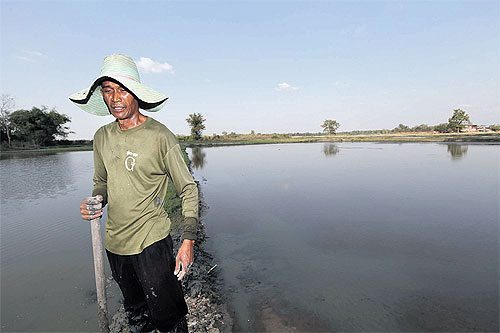This festive holiday season, join Grand Hyatt Erawan Bangkok to give the greatest gift of all with the launch of its "Elephants of Hope" charity campaign.
You can make a difference in the lives of people less unfortunate by simply purchasing a set of elephant mascots or an elephant key chain through the hotel, and the proceeds of the 'Elephant of Hope' items will go to flood victims and the underprivileged children.
In 2011, Thailand will finish the year with both positive and negative emotions. The most negative experience of 2011 has been the recent catastrophic flooding that caused a massive impact and devastation to over three million residents of Thailand,
including over 200 associates of Grand Hyatt Erawan Bangkok whose homes have been severely damaged by the floods.
On the brighter side, the festive season is the perfect time for giving. This year, Grand Hyatt Erawan Bangkok invites you to do just this by joining us in extending helping hands to flood victims, including our affected
associates and their families, and to the underprivileged children at the Slum Child Care Foundation, under the Royal Patronage of HRH Princess Galayani Wadhana Krom Luang Naradhiwas Rajanagarinda.
Becoming a part of this charitable giving is easy - simply purchase an Elephant Mascot from the hotel.
The hotel will sponsor the cost of each elephant. The money raised by the sales of these special iconic elephants of Thailand will be donated by Grand Hyatt Erawan Bangkok to flood victims and the Slum Child Care Foundation.
Once a proud owner of an Elephant Mascot, you can take it away as a souvenir or hang it on a branch of your favourite Christmas Tree in the hotel.
The Elephant Mascots will then later be donated to children at the Slum Child Care Foundation. You may also include a written message of goodwill for the children and help to spread festive cheer to those less fortunate.
Please join us in making this New Year a special one for all flood victims and those children in the Slum Child Care.
Grand Hyatt Erawan Bangkok would like to express our deepest sorrow to all flood victims and is wishing that 2012 will be a happy and more prosperous year for everybody, all around the world.
Elephant mascots and elephant key chains are available for purchase at Grand Hyatt Erawan Bangkok.
Purchase a set of elephant mascots or an elephant key chain and be a part of the charitable giving.
Bt700 net for a set of three elephant mascots.
Bt500 net for an elephant key chain.





